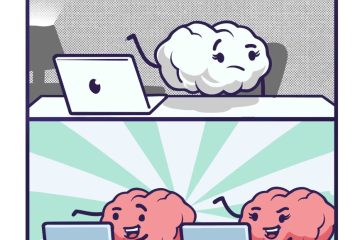These days, we hear a lot about supporting young people with ’emotional regulation’ or about people feeling ‘dysregulated’. However, these are terms that are often misunderstood. Emotional regulation occurs when the emotion someone feels aligns with what’s happening; it is not being calm when the situation is genuinely distressing. And what is distressing for neurodivergent youngsters can look different in comparison to neurotypical peers. It’s not because they feel “too much” or “too little,” but because their brains process emotion, environment, and sensory input differently.
Supporting young people means helping them develop the ability to recognise and understand their emotions, and empowering them to manage their emotions in ways that are right for them and don’t lead to unhealthy levels of masking.
What does emotional regulation look like for neurodivergent young people?
Neurodivergent brains are being fed more information from the environment (sensory and social), and it’s not filtered or prioritised in the same way as in a neurotypical body. This can lead to faster emotional escalation and slower coming down once emotions spike. What might look like an overreaction to a more neurotypical adult could simply be an appropriate response to an overwhelming internal experience.
We all soothe our nervous systems with sensory stimulation (stims) such as tapping a pencil, twirling hair, and biting nails. Some neurodivergent young people have other stims such as rocking, pacing or repeating words, but because people don’t see those behaviours in the same way, they can be misunderstood or judged. Young people can also try to soothe themselves by seeking control over their environment, or by withdrawing entirely. Others may express emotion externally (loudly, physically, or with urgent intensity). These are not signs of poor behaviour. They are communicating and attempting to soothe themselves.
How is this different from neurotypical emotional regulation?
Neurotypical young people may find it easier to name their emotions, understand social rules around expressing them, and follow traditional (i.e. more neurotypical) calming strategies (like deep breathing or taking space). Their brains might naturally filter out background noise or shift focus more easily, helping them manage their emotions in line with traditional/neurotypical expectations.
In contrast, neurodivergent young people may:
- Take longer to process what they’re feeling or why
- Struggle with recognising the early signs of escalation
- React strongly to seemingly small triggers due to sensory sensitivities
- Need specific, often nontraditional tools or routines to feel safe and grounded
- Mask or internalise emotion until it explodes as a meltdown or shutdown
These are not failures to regulate, but rather a need for a different framework than standard societal concepts of handling emotions.
What people often miss
Many neurodivergent young people are always trying to soothe their system; it just might not look like what you expect.
Examples of misunderstood soothing include:
- A child pacing in a classroom might be managing their rising anxiety
- A teen using headphones all day might be protecting themselves from sensory overload
- Someone “refusing” to talk might be because they are too dysregulated to find words at all
When adults don’t recognise these signs, they may try to stop them, thinking they’re being disruptive or inappropriate, which can interrupt a vital coping mechanism and increase distress.
How adults can support
Support doesn’t have to be complex; but it does need to be consistent, respectful, and flexible. Here are some core ways adults can help:
- Accept differences
Start by unlearning what “appropriate” soothing should look like. Let go of the idea that calm means quiet, or that self-control automatically means stillness. Instead, look for what helps that individual stay grounded, even if it looks different to you.
- Create safety before solutions
A calm nervous system is impossible without felt safety. Validate the emotion first: “It makes sense that you’re upset,” rather than “Calm down.” Safety opens the door to soothing.
- Help build emotional vocabulary
Many neurodivergent people have difficulty voicing their feelings. This is something that can be worked through over time with a lot of practice and help from others.
- Offer low-demand, low-judgement spaces
Quiet corners, permission to take breaks, and low-pressure interactions can all provide young people with the space they need to return to a calm state at their own pace.
- Prioritise co-regulation over independence
Many teens are expected to “calm themselves” by default, but co-regulation (being calm with someone) is a lifelong tool. Sitting beside someone, offering quiet presence, or simply breathing together can be more powerful than words.
- Respect their tools
If a young person uses a weighted item, a stim toy, a game, or music to soothe, let them. These are not distractions; they’re strategies in their own right. Build them into routines, and advocate for their use in schools and group settings.
Supporting neurodivergent young people with their emotions isn’t about fixing unconventional methods. It’s about recognising the effort they’re already putting in, helping them feel safe to express emotion without shame, and empowering them to discover what regulation and calm looks like for them.
When we move away from control-based approaches and towards connection, validation, and flexibility, we create space for young people to develop emotional self-understanding; not by hiding who they are, but by being more fully themselves.


